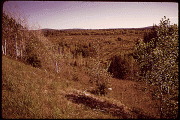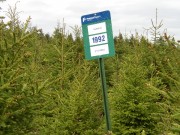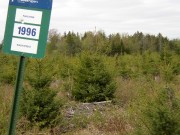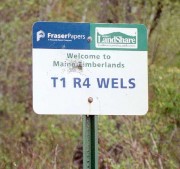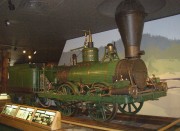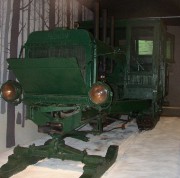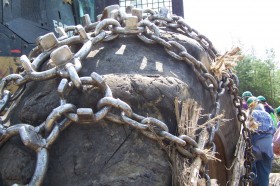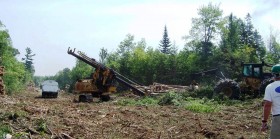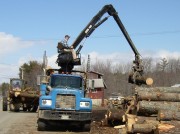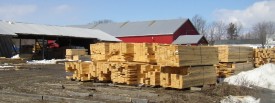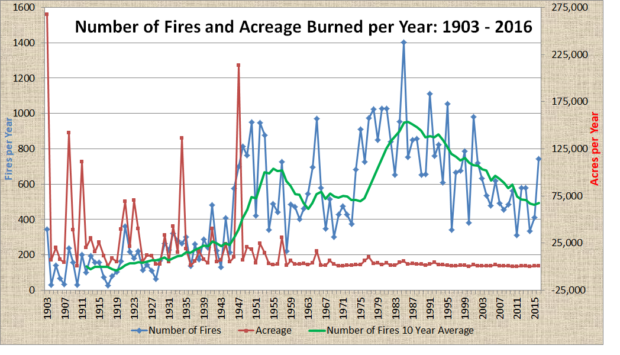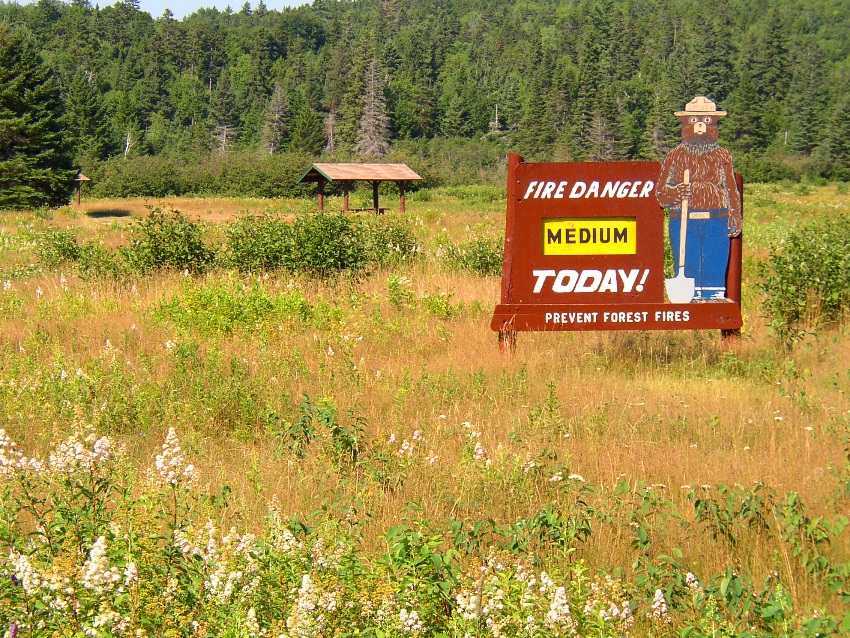
sign: “Fire Danger, Medium, Today!, Prevent Forest Fires” in Nesowadnehunk Field, with camp sites in Baxter State Park
Forestry is the science of managing forest resources for human benefit. Maine has had a long history of using forest resources and an equally long history of controversy over whether proper management of those resources has been adequate.
From the earliest European presence, the woods of Maine have been a source of masts, boat building materials, and boards for housing and other structures. Later, the pulp and paper industry, and the recreational uses of hunting, hiking, and camping broadened its importance. Still later, people began to understand the role of forests in absorbing greenhouse gasses, providing habitat for wildlife, and protecting water resources. See more at Lumber Industry.
Forest Fires in Maine
| Year | No. | Acres | Damage$ |
| 1903 | 345 | 267,587 | 947588 |
| 1904 | 31 | 6,958 | 12655 |
| 1905 | 142 | 20,316 | 63623 |
| 1906 | 67 | 7,621 | 21028 |
| 1907 | 33 | 4,524 | 14567 |
| 1908 | 237 | 142,130 | 618816 |
| 1909 | 157 | 39,028 | 96699 |
| 1910 | 30 | 848 | 2841 |
| 1911 | 202 | 111,077 | 337355 |
| 1912 | 99 | 20,240 | 71548 |
| 1913 | 194 | 30,214 | 176842 |
| 1914 | 157 | 15,716 | 29307 |
| 1915 | 156 | 25,657 | 78116 |
| 1916 | 72 | 11,616 | 19765 |
| 1917 | 28 | 458 | 2134 |
| 1918 | 79 | 8,938 | 77891 |
| 1919 | 104 | 5,020 | 8930 |
| 1920 | 165 | 39,803 | 185908 |
| 1921 | 362 | 68,830 | 517115 |
| 1922 | 216 | 21,388 | 114776 |
| 1923 | 181 | 70,339 | 341366 |
| 1924 | 220 | 40,357 | 113788 |
| 1925 | 115 | 6,053 | 43118 |
| 1926 | 144 | 12,212 | 52181 |
| 1927 | 109 | 11,620 | 129,354 |
| 1928 | 64 | 2,814 | 6,035 |
| 1929 | 168 | 2,465 | 44,757 |
| 1930 | 263 | 33,309 | 143,861 |
| 1931 | 226 | 4,807 | 52,997 |
| 1932 | 321 | 42,827 | 69,807 |
| 1933 | 281 | 15,294 | 48,927 |
| 1934 | 266 | 136,370 | 421,664 |
| 1935 | 301 | 18,828 | 37,558 |
| 1936 | 136 | 1,640 | 20,295 |
| 1937 | 262 | 5,713 | 30,214 |
| 1938 | 173 | 16,139 | 33,521 |
| 1939 | 287 | 7,433 | 36,710 |
| 1940 | 240 | 4,111 | 22,936 |
| 1941 | 481 | 40,350 | 511,340 |
| 1942 | 225 | 4,993 | 11,633 |
| 1943 | 131 | 7,168 | 39,910 |
| 1944 | 408 | 24,203 | 278,864 |
| 1945 | 214 | 4,950 | 64,583 |
| 1946 | 576 | 10,327 | 95,932 |
| 1947 | 700 | 213,547 | 11,990,855 |
| 1948 | 814 | 7241 | 135,433 |
| 1949 | 763 | 21,052 | 65,841 |
| 1950 | 951 | 18,051 | 164,791 |
| 1951 | 421 | 3,685 | 30,981 |
| 1952 | 948 | 24,695 | 625,951 |
| 1953 | 877 | 14,558 | 120,055 |
| 1954 | 341 | 3,180 | 22,522 |
| 1955 | 490 | 1,782 | 29,477 |
| 1956 | 443 | 2,580 | 13,076 |
| 1957 | 726 | 30,967 | 316,277 |
| 1958 | 221 | 1,562 | 11,676 |
| 1959 | 485 | 6,571 | 57,234 |
| 1960 | 472 | 2,810 | 128,302 |
| 1961 | 402 | 2,481 | 27,265 |
| 1962 | 463 | 3,438 | 99,543 |
| 1963 | 544 | 1,808 | 58,000 |
| 1964 | 695 | 3,582 | 20,603 |
| 1965 | 972 | 16,480 | 24,010 |
| 1966 | 580 | 1,361 | 11,611 |
| 1967 | 347 | 1,619 | 7,045 |
| 1968 | 516 | 6,248 | 45,533 |
| 1969 | 300 | 2,399 | 10,270 |
| 1970 | 430 | 1,011 | 56,439 |
| 1971 | 476 | 767 | 68,546 |
| 1972 | 430 | 1,652 | 57,616 |
| 1973 | 374 | 1,508 | 28,492 |
| 1974 | 684 | 2,266 | 76,395 |
| 1975 | 911 | 1,973 | 144,186 |
| 1976 | 727 | 6,360 | 122,192 |
| 1977 | 975 | 10,075 | 233,740 |
| 1978 | 1,024 | 3,170 | 67,435 |
| 1979 | 851 | 3,829 | 177,720 |
| 1980 | 1,029 | 2,255 | 175,076 |
| 1981 | 1,027 | 3,905 | 48,856 |
| 1982 | 840 | 1,529 | 42,622 |
| 1983 | 651 | 1,197 | 150,927 |
| 1984 | 955 | 4,653 | 269,295 |
| 1985 | 1,402 | 5,460 | 342,956 |
| 1986 | 752 | 2,904 | 349,612 |
| 1987 | 850 | 3,537 | 247,690 |
| 1988 | 857 | 2,375 | 188,078 |
| 1989 | 651 | 2,404 | 604,296 |
| 1990 | 657 | 1,275 | 275,793 |
| 1991 | 1,110 | 2,797 | 759,301 |
| 1992 | 761 | 4,427 | 1,544,815 |
| 1993 | 824 | 1,800 | 231,902 |
| 1994 | 609 | 2,046 | 52,658 |
| 1995 | 1,054 | 1,180 | 1,437,244 |
| 1996 | 342 | 419 | 74,950 |
| 1997 | 667 | 919 | 133,374 |
| 1998 | 677 | 1,533 | 660,462 |
| 1999 | 786 | 1066 | 799,920 |
| 2000 | 383 | 393 | 776,825 |
| 2001 | 980 | 2220 | 1,671,160 |
| 2002 | 719 | 766 | 268,111 |
| 2003 | 634 | 844 | 587,191 |
| 2004 | 534 | 983 | 649,369 |
| 2005 | 480 | 729 | 327,418 |
| 2006 | 619 | 1772 | 1,256,741 |
| 2007 | 491 | 425 | 860,872 |
| 2008 | 456 | 544 | 664,538 |
| 2009 | 484 | 481 | 944,920 |
| 2010 | 562 | 342 | 434,959 |
| 2011 | 310 | 118 | n.a. |
| 2012 | 579 | 474 | n.a. |
| 2013 | 579 | 730 | n.a. |
| 2014 | 334 | 226 | n.a. |
| 2015 | 412 | 645 | n.a. |
| 2016 | 742 | 858 | n.a. |
Major paper companies have argued that clear cutting is an efficient management technique. (See Georgia Pacific clear cut photo, May, 1973, U.S. EPA photo. National Archives # NWDNS-412-DA-7869.)
Reforestation by planting young trees has been one method of regenerating growth, though often of a single species rather than the older mixed species. The products are uniform wood with known properties, easily harvested at a time when most are at the peak of maturity.
Critics argue that a single species forest is more susceptible to insect infestation, thus requiring heavy use of pesticides. In addition, herbicides (another chemical application) are necessary to suppress competing hardwoods. (See photo of reforestation by the St. Regis Paper Co., about 20 miles south of Woodland, May,1973, U.S. EPA photo, National Archives # NWDNS-412-DA-7871.)
Here are two views of the Fraser Paper Company’s tree plantations in Aroostook County. These are clearly focused on age and species specific monoculture forestry. That is, the same type of tree is planted on a large tract, all at the same time, so that all may be harvested at the same time years later.
The state’s forest resources stood at a record low 80 million cords of timber in 1919, because of intense harvesting, fires, and clearing for farms.
Transporting wood to sawmills or paper mills has been a major component of the forest products industry. Weather has played a significant role as “mud season” bogs down the private roads in the deep woods. Where horses were used to “skid” logs in the winter, motorized vehicles like the Lombard, then more modern vehicles, are now used moving more wood than ever. According to the Maine State Museum,
Alvin O. Lombard of Waterville invented and manufactured steam-powered, and later gasoline-powered, tractors to haul logs. Beginning in 1901 these “Lombard Log-Haulers” (photo of exhibit at the Maine State Museum) revolutionized work in the Maine Woods. The principal Lombard invention was the system of moving tracks. Skis were placed in the front for steering, but no vehicles were equipped with brakes. Steam engines, like “The Lion,” were used on narrow gauge railways to move logs to mills.
Currently, the mode of transportation consists of large trucks using private roads to mills or to public roads. The “Golden Road,” privately owned, begins (or ends) at the former Great Northern Paper mill in Millinocket and extends to the Quebec border after snaking along the West Branch of the Penobscot River then along Caribou Lake, Seboomook Lake, and finally to T5R20 across the border from St-Zachaire, Quebec.
These vehicles harvest, move, delimb and load logs with incredible speed and efficiency. In contrast, during the 1930’s, the Civilian Conservation Corps helped build fire roads and towers in the Maine woods with simple tools and much labor.
Forest Fires
Destructive fires in Maine’s forests in 1903 (268,000 acres) and 1908 (142,130 acres) led to the establishment of the Maine Forestry District in 1909 to protect the nearly 10 million acres in the state’s unorganized northern townships. By 1924, sixty-four fire towers had been built and were connected to 80 Warden’s camps throughout the District. Over the years, millions of dollars in damage has been done to woodlands by forest fires, the worst year having been 1947 when Mount Desert and many other areas were devastated. See Hollis, Newfield and Waterboro.
With more than 26,000 square miles of forest, fire is always a major concern of Maine citizens. The Maine Forest Service was created in 1908 to coordinate the prevention and fighting of forest fires. Early fire statistics are somewhat incomplete because only the larger fires were reported. Today, any size fire in a forest or threatening a forest is reported.
In the fifty years 1903-1952, the average number of reported fires was 265 and the average acreage burned was 33,757. From 1953 through 1988 the average had jumped to 671 reported fires, but burned acreage had dropped to an average of 4,565. From 2006 through 2008, fires averaged 517 per year, but acres burned plummeted to 914.
Insect Infestations
In 1909 and for the next decade, an outbreak of spruce budworm spread throughout the north and east of the Forestry District. After killing 33-80 percent of spruce and fir trees in affected areas, an estimated 30 million cords of pulpwood (about a 20 year supply for papermaking) was lost.
The gypsy moth was brought to Massachusetts from France in 1869 as an experiment in silk worm breeding. Some of the moths escaped and by the early 1900’s they had spread to southern Maine thriving on hardwoods. By the mid-1930’s, the infestation was so great that forest products suspected of harboring the moth larvae were prohibited from being shipped outside a quarantine zone. [Silk production was also pursued in Newport in the 1830’s.]
The brown-tail moth and the spruce sawfly are other periodic threats to Maine forests.
Diseases
Town meetings in the 1920’s,30’s and 40’s appropriated matching funds to pool with state and federal efforts for the control of the White Pine Blister Rust. See Porter (1925), Boothbay Harbor (1931), and Dover-Foxcroft (1944) Town Warrants.
Additional resources
Fire data was contributed by Kent Nelson of the Maine Forest Service, Forest Protection Bureau. September 29 2017.
The 2001 Biennial Report On The State Of The Forest And Progress Report On Forest Sustainability. State of Maine. Forest Policy and Management Division.
Augusta, Me. Dept. of Conservation, Maine Forest Service [i.e. Bureau of Forestry], 2001.
Birch, Thomas W. Forest-Land Owners Of Maine, 1982. Broomall, Pa. U.S. Dept. of Agriculture, Forest Service, Northeastern Station, 1986.
Flatebo, Gro., et al. Biodiversity in the Forests of Maine: Guidelines for Land Management. Orono, Me. University of Maine Cooperative Extension. 2008.
Laustsen, Kenneth M., et al. Fourth Annual Inventory Report on Maine’s Forests. Augusta, Me. Maine Forest Service. 2003.
Liddell, James D. Conservation Easements and Maine’s Northern Woods: suggestions for Maine’s policy-makers. INDEPENDENT WRITING PROJECT (J.D.)–University of Maine School of Law, 2004.
North Atlantic Fire Exchange. “THE 1947 WILDFIRE SEASON.” http://www.northeastwildfire.org/1947-fire
Northeast Historic Film, Bucksport, Maine. (See related moving images in Movies.)
McGuire, Harvey Paul. The Civilian Conservation Corps in Maine: 1933-1940. Thesis (M.A.) in History–University of Maine, 1966.
Tree Growth Tax Law Program: Enrollment Statistics For The Organized Territories For 1993. Maine. Bureau of Forestry. Augusta, Me. Maine Forest Service [i.e. Bureau of Forestry]. 1994.
White, Eric M. A Closer Look at Forests on the Edge: future development on private forests in three states. Portland, OR U.S. Department of Agriculture, Forest Service, Pacific Northwest Research Station. 2008. (includes Maine case studies)



